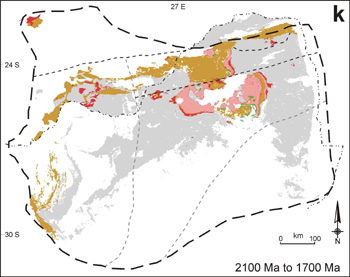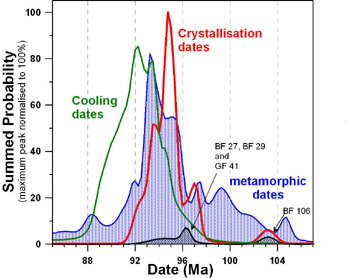Techniques Used
Geochronology involves the dating of geological material, for instance U-Th-Pb dating of zircon of rocks thoughout the earth's history or U-series dating of relatively young carbonate sediments (past few hundred thousand years to a few million years). Zircon dating at the SIL utilises the Kober evaporation method. Future emphasis at the SIL will be on the dating of materials in support of palaeoclimate and palaeoenvironmental research rather than in competition with the many excellent zircon dating facilities available elsewhere in Canada. U-series dating techniques are currently being developed for this purpose. Radiocarbon dating is regularly used in palaeoclimate studies but the analyses are contracted out.
Example Applications
Geochronology Database |
|
 |
An international geochronology database system has been developed. A desktop version is available for offline use by researchers but the main emphasis is on a client/server version which runs on the web. Use of these database systems, linked to GIS, has enabled the creation of maps which illustrate the development of the Kaapvaal Craton (the ancient shield of southern Africa) through time. Data are currently being compiled for a similar project in Canada. For further information, contact Bruce Eglington |
Geochronology of the Semail Ophiolite, Oman and United Arab Emirates |
|
 |
 |
| Probability density plots for dates from the Semail ophiolite, ignoring decay constant uncertainties |
Probability density plots for dates from the Semail ophiolite, after taking decay constant uncertainties into account |
| Published data from the Semail ophiolite of Oman and the UAE were compiled in the DateView geochronology database together with new zircon dates determined during a mapping project performed by the Council for Geoscience, South Africa, for the government of the United Arab Emirates. In order to compare the data from a variety of isotope systems, dates had to be recomputed to include uncertainties associated with decay constants. The two diagrams, above, illustrate the significant difference in the results obtained when these uncertainties are taken into account. For further information, contact Bruce Eglington of the SIL, Geoff Grantham of the Council for Geoscience, or Richard Armstrong at the RSES, Australian National University |
|


